Lotus debuts the all-new and all-electric Hyper-SUV, the Lotus Eletre. The Eletre is 4WD with a battery capacity that’s over 100kWh and with power from 600hp. A 350kW charger will deliver a 400km (248 miles) range in just 20 minutes.
The car’s target maximum WLTP driving range is c.600km (c.373 miles). It also comes with the ability as standard to accept 22kW AC charging which, where available, reduces the time plugged in. The overall exterior and interior design has been led by an international team based at the Lotus Tech Creative Centre (LTCC) in Warwickshire, UK.
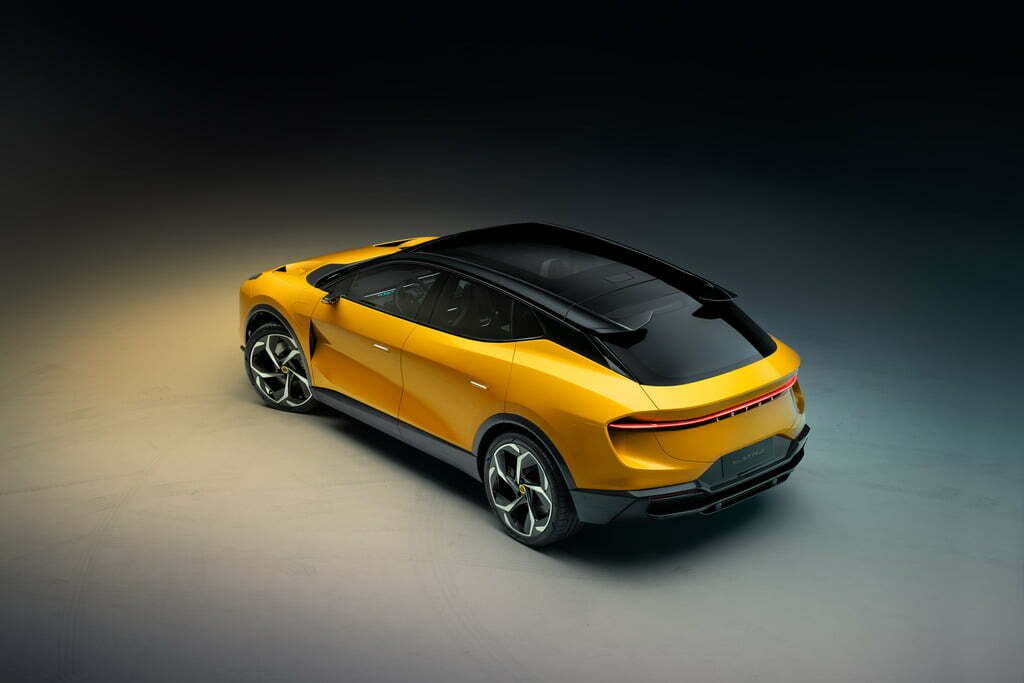
The immersive experience with the Lotus Eletre begins before the driver has reached the car. Pressing the button on the key or smartphone app activates a moment of theatre that’s unique in the automotive world. The car’s exterior lights run through a short sequence, the active front grille ‘breathes’ and the illuminated flush door handles deploy. The experience is repeated inside the car as the door closes behind the occupant.
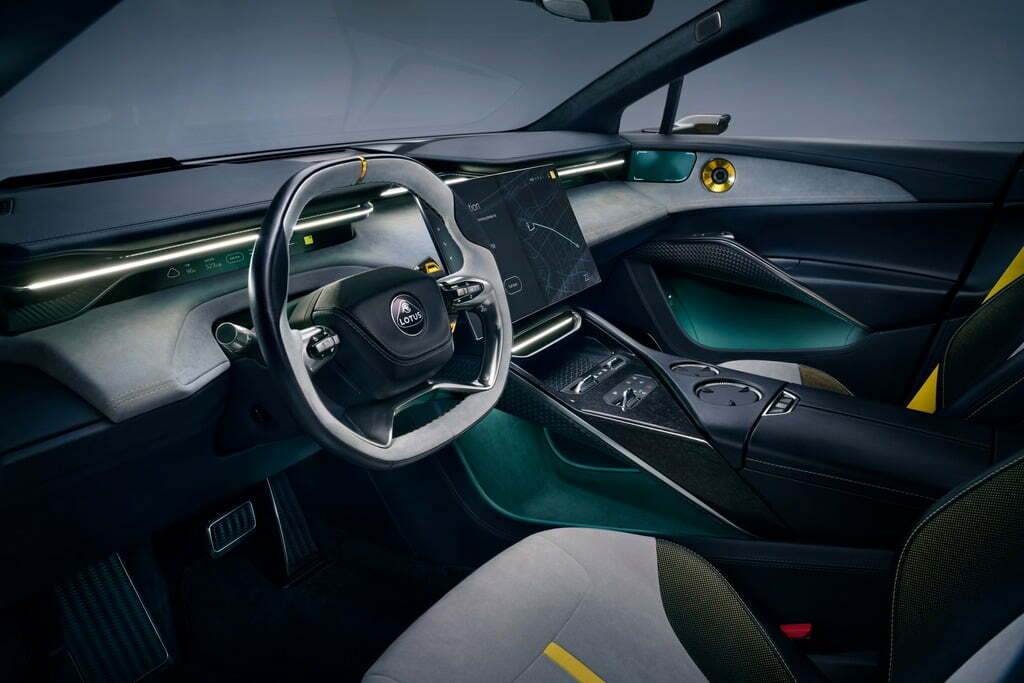
Design of the Lotus Eletre has been led by Ben Payne. His team has created a daring and dramatic new model with a cab-forward stance, long wheelbase and very short overhangs front and rear. Creative freedom comes from the absence of a petrol engine under the bonnet, while the short bonnet echoes the styling cues of Lotus’ iconic mid-engined layout. Overall, there’s a visual lightness to the car, creating the impression of a high-riding sports car rather than an SUV. The ‘carved by air’ design ethos which inspired the Evija and Emira.
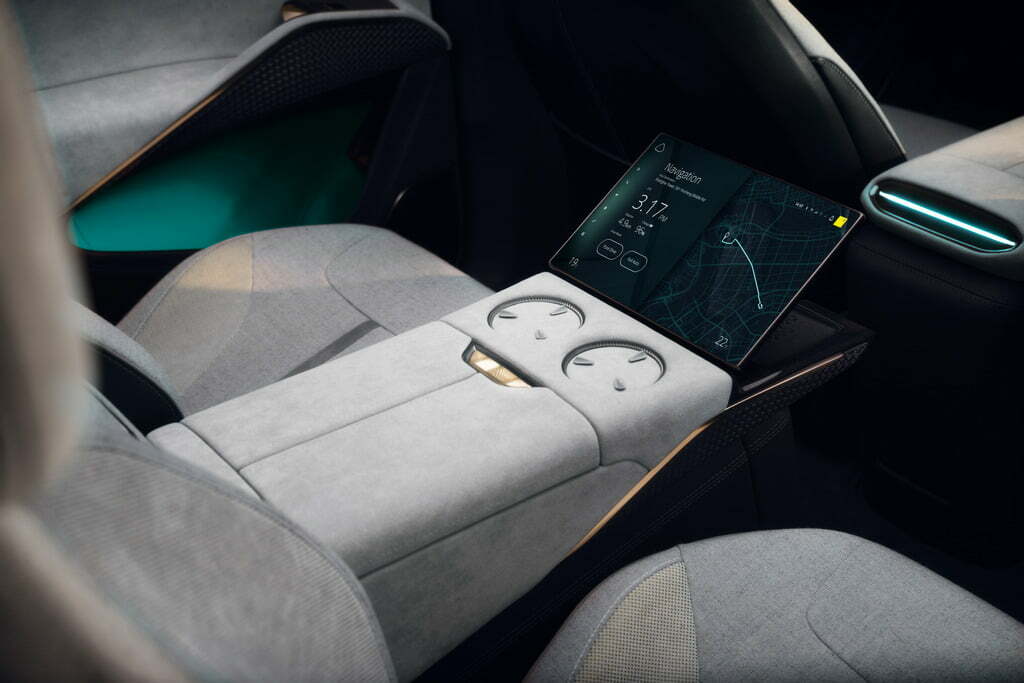
A signature element of the design is its ‘porosity’ – the aerodynamic principle of air flowing through the car as well as under, over and around it. Porosity was at the heart of the Evija’s design, is integral to the Emira, and has provided clear inspiration for the Eletre. It is most obvious where air is channelled under the leading edge of the car, emerging through two exit vents in the bonnet above. There are other examples of porosity ahead of and behind the front wheel arches, behind the rear wheels, and even at the top of the D-pillar. For the driver there are clear benefits to porosity – less resistance in cutting through the air, delivering a more efficient journey in terms of improved vehicle range, speed and performance.
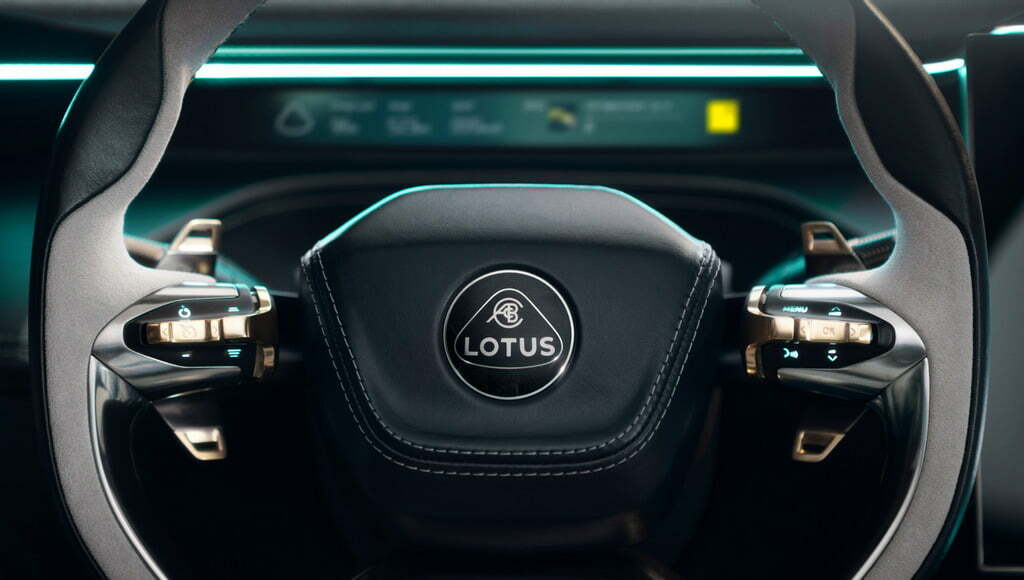
At the front of the Eletre, the very sharp and crisp leading edge reveals a clear lineage with the Emira and Evija. It draws a distinct line across the very striking and contemporary design treatment below. There are further echoes of Evija in the layering of the surfaces, the creation of space and the optimised aerodynamic performance.
Just above the leading edge are the very slim and technical light clusters which house the Daytime Running Lights and scrolling directional indicators. The main lamps, which are available with matrix technology to permit constant high beam use without affecting oncoming traffic, are housed below, recessed and partially hidden.
Lower down is the Eletre’s active front grille, a network of interconnecting triangular petals that dominate the central section. Intricately designed, they remain closed when the car is at rest or when there’s a need to reduce drag during driving. They open in a distinctive pattern to feed air into the radiator, allowing the Eletre to ‘breathe’ when cooling of the electric motors, battery pack and front brakes is required. It’s a further example of the car’s porosity and also offers aerodynamic benefits.
Overall there is a unique sense of flow and a kinetic quality to the Eletre’s front end, which also includes a deployable LIDAR sensor mounted at the top of the windscreen. All the black components are finished in carbon fibre while the body panels are aluminium. It is the bold leading edge of the Eletre’s bonnet which continues round into the front wing, wheel arch and ultimately the length of the vehicle as a feature line. The car’s taut and muscular lines are dominant above it, while the aerodynamic elements are below.
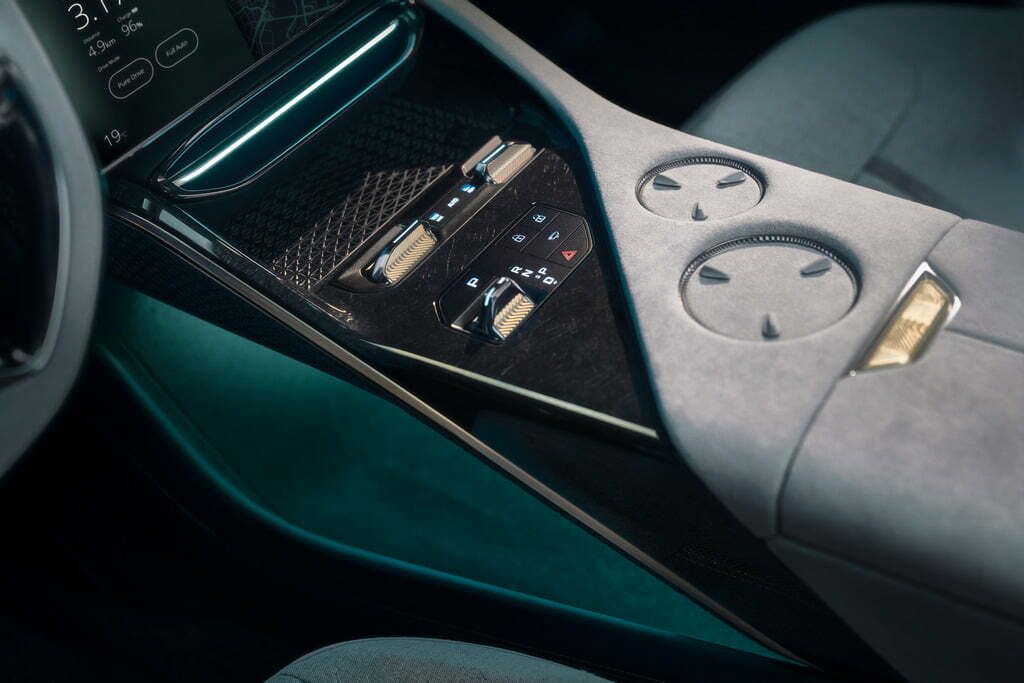
Moving round the car, its muscular haunches dominate the profile view. The air outlet immediately behind the front wheels defines the sculpted shape of the doors, each of which has a flush handle. The electrically opening cover for the charging port is fitted in the front wing, as are the deployable LIDAR sensors, one on each side and a world-first technology for the Eletre.
The aggressive rake of the windscreen is clearly visible in profile, with a relatively narrow, glass area – and black cantrail above – which tapers away dramatically at the rear. That leads into a unique floating D-pillar, engraved with the Eletre wordmark and featuring an innovative ‘air blade’ which aids drag reduction. Another example of porosity, it’s an aerodynamic performance enhancement taken directly from the front bumper of the Emira.
Each door mirror is replaced by an Electric Reverse Mirror Display (ERMD), which houses three different cameras – one for the rear-view mirror, a second to help create a 360-degree view of the car from above to aid parking, and a third that’s part of the intelligent driving technologies. It works in tandem with the Eletre’s LIDAR system to deliver autonomous driving capability. The car rides on 23-inch machine-cut split-finish five-spoke alloys with carbon fibre inserts to aid air flow and ceramic composite 10-piston caliper brakes.
Moving to the rear, the full-width ribbon light strip picks up the feature line from the profile. Situated just above the Lotus wordmark, it is red when the car is moving and includes a scrolling directional indicator at each end, where it curves gently into the air outlets from the wheel arches – another design cue which echoes both the Emira and Evija. The light can appear in four colours, playing a role in the car’s theatrical unlocking sequence and indicating battery charge status.
The rear is dominated by the unique cantilevered carbon fibre ‘floating’ split roof spoiler, a motorsport-inspired design feature that evokes race car winglets. With the central section removed weight is saved – a very Lotus concept – and allows the LIDAR sensor to be integrated at the top of the glass. Optimised for aerodynamics, the roof spoiler channels airflow down the glass and into the active tailgate spoiler which is deployed automatically at speed. It has three distinct deployment angles, depending on the drive mode selected.
The interior uses premium feel and highly durable man-made microfibres on the primary touchpoints, and an advanced wool-blend fabric on the seats. It is 50% lighter than traditional leather, allowing for further weight savings. The hard materials are carbon fibre, though rather than use the traditional ‘weave’ most often associated with automotive design.
Below the instrument panel a blade of light runs across the cabin, sitting in a ribbed channel that widens at each end to create the air vents. While it appears to be floating, the light is more than decorative and forms part of the human machine interface (HMI). It changes colour to communicate with occupants, for example, if a phone call is received, if the cabin temperature is changed, or to reflect the vehicle’s battery charge status.
Below the light is a ‘ribbon of technology’ which provides the front seat occupants with information. Ahead of the driver the traditional instrument cluster binnacle has been reduced to a slim strip less than 30mm high to communicate key vehicle and journey information. It’s repeated on the passenger side, where different information can be displayed, for example, music selection or nearby points of interest. Between the two is the latest in OLED touch-screen technology, a 15.1-inch landscape interface which provides access to the car’s advanced infotainment system. It automatically folds flat when not required. Information can also be displayed to the driver via a head-up display featuring augmented reality (AR) technology, which is standard equipment on the car. The standard audio system on the car is provided by renowned British brand KEF. Called KEF Premium, it is a 1,380-watt 15-speaker set-up with Uni-QTM and surround sound technology.
The Eletre is available with Intelligent Adaptive Cruise Control (ACC); Collision Mitigation Support Front (CMSF); Traffic Sign Information (TSI); Door Open Warning (DOW); Rear Cross Traffic Alert (RCTA); Front Cross Traffic Alert (FCTA); Lane Change Assist (LCA); Children Presence Detection (CPD); Lane Keep Aid with Lane Departure Warning / Prevention (LKA+); Parking Emergency Brake (PEB); Collision Mitigation Support Rear (CMSR); and Emergency Rescue Call (E-Call). There are i-Size child seat anchor points on the outboard rear seats.
The Eletre is built on an all-new 800v dedicated electric vehicle architecture with integrated, high-voltage power distribution system. This architecture uses aluminium and high tensile steel for optimum structural rigidity. The flat ‘skateboard-style’ battery pack and electric motors are close to the ground to create a low centre of gravity. There are two electric motors, one driving the front wheels and another driving the rear wheels. A three-in-one electric drive system integrates each motor with a controller and reducer, an efficient design which makes the unit smaller and lighter.
The car has five-link suspension at the rear for optimised ride and handling, while standard equipment includes air suspension and Continuous Damping Control (CDC). Active ride height, active rear axle steering, an active anti-roll bar and torque vectoring via braking are all available.
Discover more from SNAP TASTE
Subscribe to get the latest posts sent to your email.


